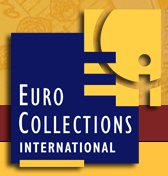
Austria 2009 25€ Year Of Astronomy Silver Niobium Brilliant Uncirculated Coin
Issued in March of this year, this stunning release continues a tradition of well crafted silver and niobium bi-metallic coins going back to 2003. Each year the Austrian Mint has released a new coin to join the collection, with themes ranging from Transportation and Television, to Satellite Technology and the Fascination of Light. As each year passes and more collectors discover this unique series of coins the demand for them gets stronger - with the 2008 Fascination of Light coin out selling all previous issues combined! We expect even bigger things for the 2009 release given that it once again showcases the fine craftsmanship of the Austrian Mint sculptors, as well as focusing on the universally beloved theme of Astronomy and space in general - together with a well-fitting anniversary.
In 1609, Galileo was one of the first to build what is now called the terrestrial telescope, or spyglass, magnifying objects on the ground as well as in the sky. Galileo went on to make many contributions to the science of space and to plotting the Astronomical map, and has gone down in history as the Father of Astronomy. The International Year of Astronomy celebrates the incredibly significant event of Galileo first pointing his telescope to the skies, as well as all the advancements in telescope technology over those 400 years. Thanks to those initial discoveries we are now able to see further into the Universe than ever before, discovering new planets, witnessing the birth of stars, and visiting both the planets in our own solar system as well as our sun, up close and personal, receiving incredible insight into our world, the world around us, and how it all came to be.
The use of Niobium in these captivating issues from Austria is inspired. Niobium is a rare transition metal found in the minerals pyrochlore and columbite. It is used in a wide range of industries and due to it's help in improving the strength of iron, it's temperature stability and it's superconducting properties, Niobium is used in everything from gas pipes to jet and rocket engines. It has applications in such diverse areas as electronics, nuclear industries, optics and jewelry. The particular facet of interest in using Niobium in numismatics is the ability to change the color of the niobium core. This can be done in several ways, one of which is by sending an electric current through the niobium while it is underwater - this way is often used for jewelry applications. For this numismatic application, the Austrian Mint uses a heat treating and oxidizing method, producing a stunning array of colours throughout the years with none more impressive than this latest release.
The obverse of this 25 euro coin shows a depiction of the "dark side" of the moon over the brilliant yellow niobium core. In the silver outer ring are images of the Earth with the sun beaming out opposite, as well as a space satellite. The inscription on this side read "Back of the Moon" on the niobium core, and "Austrian Republic" on the silver ring. The denomination of 25 euros is also on this side.
The reverse pays tribute to the 400th anniversary of the development of Galileo's telescope. A portrait of this great man is shown to the left, while to the right is a reproduction of one of Galileo's own drawings of the moon's surface as viewed through his telescope. Shown below the drawing are images of both Galileo's and Newton's telescopes, while at the top of the coin is the sun beaming once again, with a modern telescopic satellite and an image of Jupiter. To the far right in a depiction of the Kremsmuenster observatory in Austria.
The coin was expertly sculptured by mint engraver Herbert Waehner, and features an outer ring consisting of 9 grams of 90% silver surrounding 7.15 grams of 99.8% pure niobium core on a 34mm flan. Each coin is sealed in a protective capsule and housed in official Austrian Mint packaging with a numbered Certificate of Authenticity confirming the mintage of 65,000 coins released worldwide.
Euro Collections International currently has stocks available of this beautiful tribute coin on our website. For more information visit our Austria 2009 25€ Year Of Astronomy Silver and Niobium page.





No comments:
Post a Comment